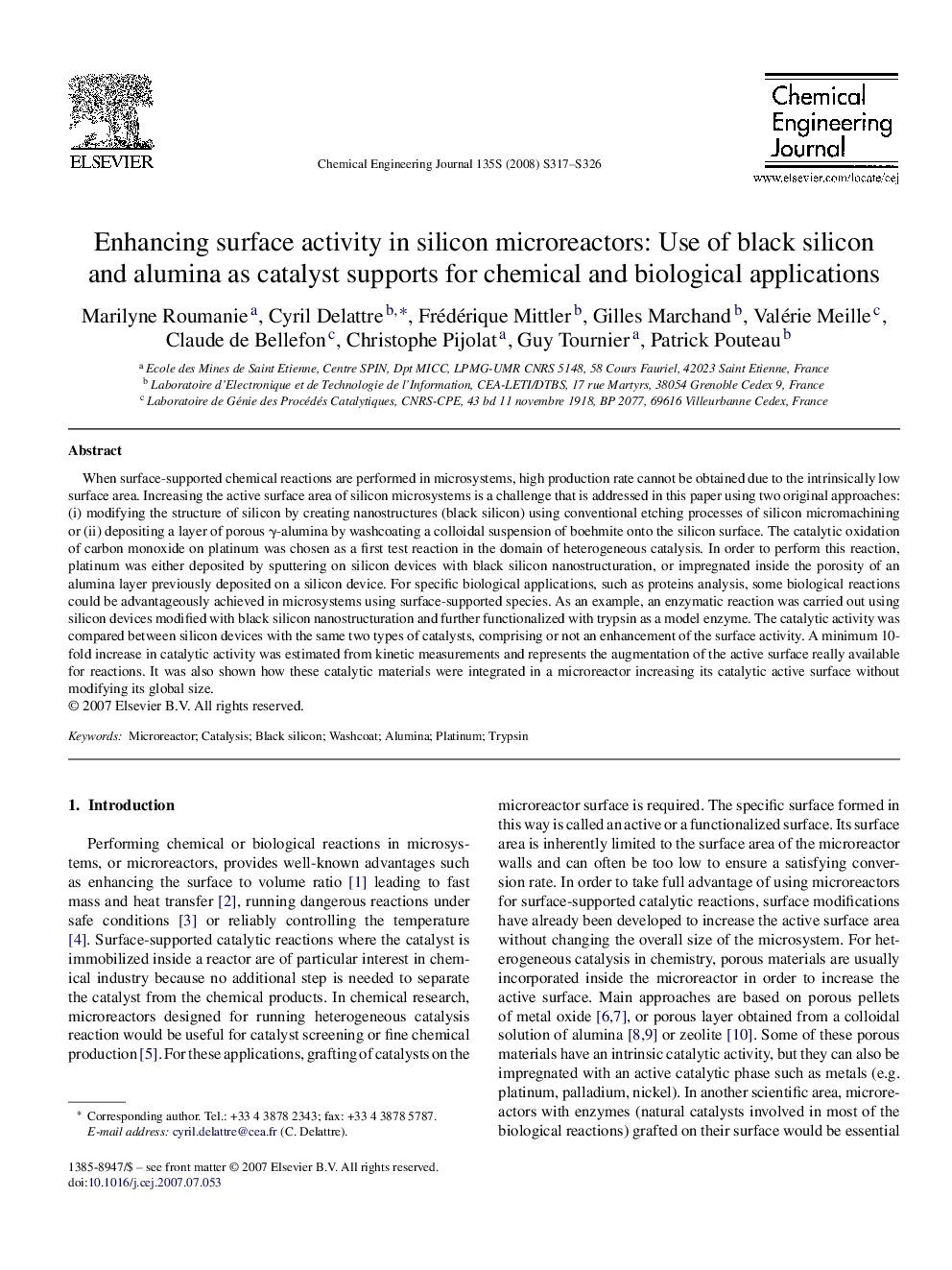| Article ID | Journal | Published Year | Pages | File Type |
|---|---|---|---|---|
| 153750 | Chemical Engineering Journal | 2008 | 10 Pages |
When surface-supported chemical reactions are performed in microsystems, high production rate cannot be obtained due to the intrinsically low surface area. Increasing the active surface area of silicon microsystems is a challenge that is addressed in this paper using two original approaches: (i) modifying the structure of silicon by creating nanostructures (black silicon) using conventional etching processes of silicon micromachining or (ii) depositing a layer of porous γ-alumina by washcoating a colloidal suspension of boehmite onto the silicon surface. The catalytic oxidation of carbon monoxide on platinum was chosen as a first test reaction in the domain of heterogeneous catalysis. In order to perform this reaction, platinum was either deposited by sputtering on silicon devices with black silicon nanostructuration, or impregnated inside the porosity of an alumina layer previously deposited on a silicon device. For specific biological applications, such as proteins analysis, some biological reactions could be advantageously achieved in microsystems using surface-supported species. As an example, an enzymatic reaction was carried out using silicon devices modified with black silicon nanostructuration and further functionalized with trypsin as a model enzyme. The catalytic activity was compared between silicon devices with the same two types of catalysts, comprising or not an enhancement of the surface activity. A minimum 10-fold increase in catalytic activity was estimated from kinetic measurements and represents the augmentation of the active surface really available for reactions. It was also shown how these catalytic materials were integrated in a microreactor increasing its catalytic active surface without modifying its global size.
